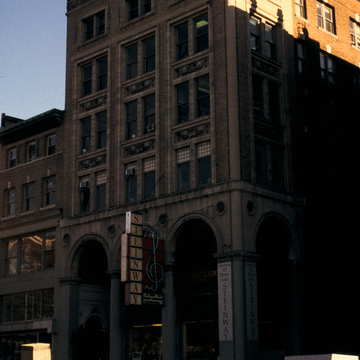A landmark in the history of the music industry in the nation, the gray brick and limestone Italian Renaissance Revival Steinert Building is the headquarters of one of the country's finest piano distributors. Founded in 1860, Steinert and Co., opened a Boston office in 1883 and moved into its own substantial building in 1896. Here, three floors, set within a monumental limestone arcade, provided display space for major piano lines, including Steinway and Co., and Boston's own Chickering and Sons (see SE28). Three of the levels above contained teaching and practice rooms, and there are carved cartouches of string and wind instruments between the fourth-through sixth-story windows. Below
You are here
Steinert Building and Steinert Hall
1896, Winslow and Wetherell. 162 Boylston St.
If SAH Archipedia has been useful to you, please consider supporting it.
SAH Archipedia tells the story of the United States through its buildings, landscapes, and cities. This freely available resource empowers the public with authoritative knowledge that deepens their understanding and appreciation of the built environment. But the Society of Architectural Historians, which created SAH Archipedia with University of Virginia Press, needs your support to maintain the high-caliber research, writing, photography, cartography, editing, design, and programming that make SAH Archipedia a trusted online resource available to all who value the history of place, heritage tourism, and learning.


